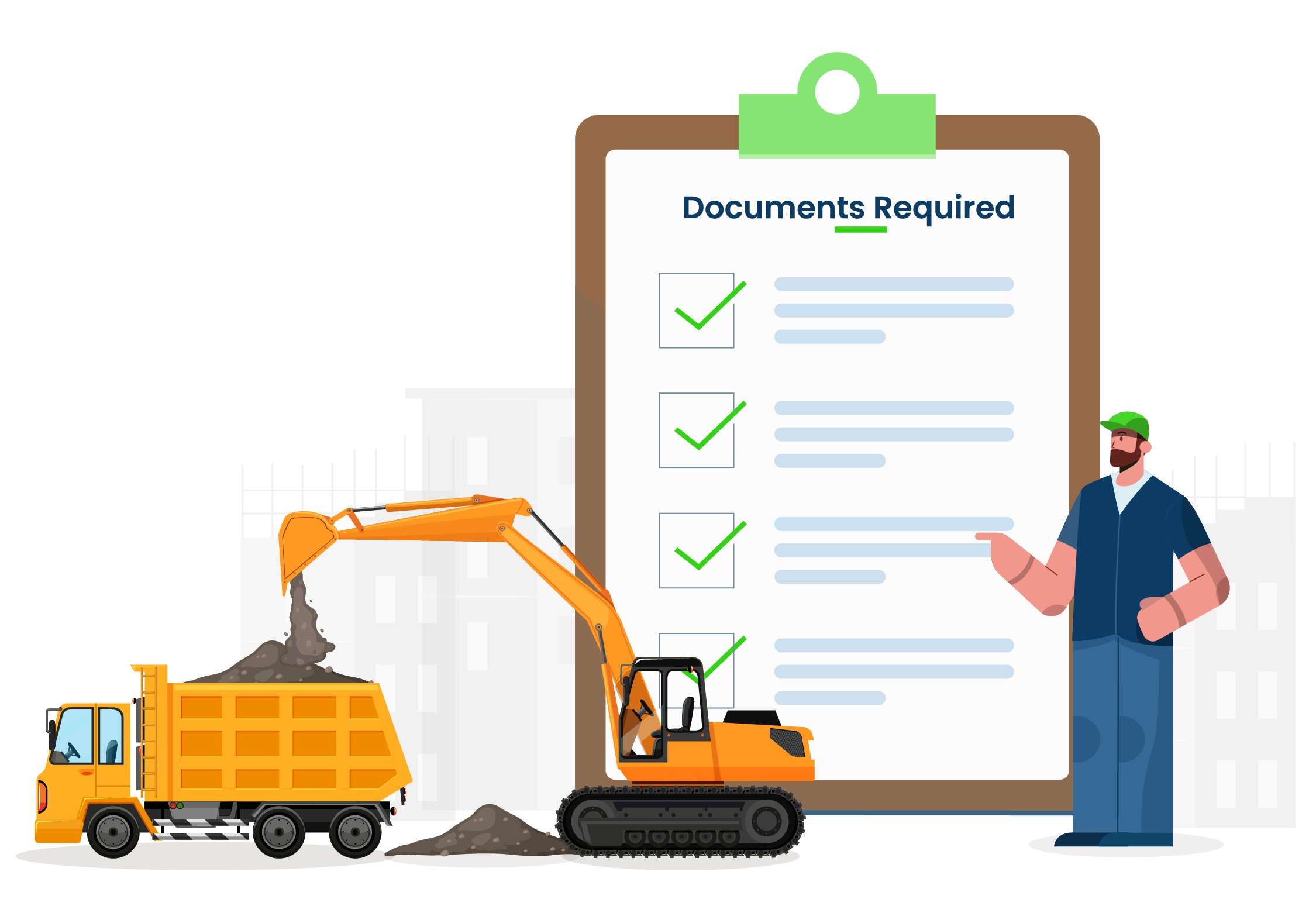Updated on October 14, 2025 05:27:40 PM
Acquiring Construction and Demolition Waste Management Authorization is crucial because Nagaland is an Indian state located in the northeastern part of the country known for its treasury cultural diversities and bio-geographical features yet grossing emerging issues in proper handling of construction and demolition (C&D) waste. Construction and demolition waste generation has also increased due to intensity of construction and infrastructure development activities especially in the urban areas caused by population growth, investment in buildings and infrastructure development, growth of residential and commercial facilities. This total waste as depicted by rubble, concrete, bricks, metals as well as other debris bear immense environmental implication to soil erosion, water pollution and potential depletion of natural resources. It is these factors that have informed the state government of Nagaland to proactively seek ways of minimizing C&D waste. Such measures include putting into practice very strict measures in the disposal of wastes, encouraging the segregation and recycling methods as well as the reuse of the resources used in the construction projects. Moreover, safety nets have been provided by the government through implementing measures to increase knowledge and participation of sustainable waste management by the public. Through these strategies, the Nagaland state seeks to address the issue of environmental conservation while at the same time both the citizens as well as the state as a whole should gain the benefits of development hence attaining the overall common goal of attaining a cleaner environment for the people of Nagaland as well as the natural environment.
Table of Content
Construction & Demolition waste also known as the Construction & Demolition materials include waste products such as rubble that are produced as a result of construction, improvement or destruction of structures. This waste stream comprises elements such as concrete, bricks, wood, metal, glass, tiles, and plastics. In construction processes, the common wastes include concrete and metals where the materials used in construction such as concrete and metal are initially cut or shaped and then thrown away as scrap, demolition processes involve wastes where structures are brought down, and they are dismantled. Another way in which renovation projects add to the amount of C&D waste is by removal of existing fixtures, fittings and building elements.
C&D waste is an environmental and management problem. If ineffective, it results in land degradation, water bodies pollution and enhanced emission of greenhouse gasses. This sometimes leads to congestion of the C&D waste hence exerting pressure on the waste management systems thus having cases of instances whereby the wastes are dumped unlawfully and those that are dumped are not well managed. Besides, poor disposal has implications in the development of health risks to communities and workers as well.
C&D waste management can therefore entail source separation, recycling and reuse of the construction and demolition waste. When different waste reduction methods and technological advances in recycling are incorporated within the C&D waste management systems, it then becomes easy to reduce the effects that these wastes have on the environment and at the same time conserve natural resources.

Construction and Demolition Waste Management Authorization offers numerous benefits that impact the environment, economy, and society. Here are some key benefits:

These usually involve a number of formalities such as obtaining all the legal permits, conforming to the legal requirements when it comes to disposal of wastes and applying all the measures of effective waste management. Here you will get some stress understanding the authorization process:
Every waste generator and service provider while implementing the rules is required to draw a new waste management plan within a period of six months from the date of notification. This plan should contain provisions on how to segregate, store, collect, reuse or recycle, transport and dispose of C&D waste within their jurisdiction.
The operators of the C&D waste processing facilities require the authorization of the State Pollution Control Board (SPCB) or the Pollution Control Committee (PCC) through Form I in which the applicant must prove that the facility meets the environmental standards and adequate infrastructural provisions are in place.
If approved, the SPCB/PCC assesses the application on its compatibility to conform to specified environmental qualities of the facility. Also as part of the Research Analysis, the needs for development of these infrastructure, technology and operational plan of the facility will be evaluated against the projections of the C&D waste generation.
Upon successful assessment, the SPCB/PCC grants authorization to the facility. This authorization is crucial for the facility to operate legally and is subject to periodic monitoring and compliance checks by the SPCB/PCC.
Once the SPCB/PCC conducts the assessment and approves it, the SPCB/PCC then gives the authorization to the facility. It is a legal requirement for such a facility to be authorized to operate and such authorization must be coordinated by the SPCB/PCC and may include periodic reviews and check-ups.

To obtain authorization for a Construction and Demolition (C&D) waste management facility in India, the following documents are required:


Professional Fees to obtain Construction and Demolition Waste Management Authorization in ₹99,000 (only with Professional Utilities)

The C&D Waste Management Authorisation to be granted is valid for a period of 5 years as per Construction & Demolition Waste Management Rules, 2016.
The key points regarding the validity of the authorization are:

Conclusion
Having the construction and demolition waste management authorization is crucial because proper handling of C&D waste is very essential for Nagaland since it faces increased levels of urbanization and development of structures. The state has been containing this challenge through policies, sorting, and designing recycling systems and encouraging people to embrace the recycling boss. The authorization process that comprises precise waste management and contingency plans for C&D waste prevent their irresponsible disposal. Having a validity of five years in operation the authorization promotes sustainable use and conservation of the environment. Therefore Nagaland through these measures want to achieve the development goals alongside the ecological preservation and create a cleaner and healthier environment for the people.

At Professional Utilities, we leverage our industry knowledge and expertise to help businesses navigate complex regulations, minimize risks, and optimize operations for maximum efficiency and profitability.






"Explore how Professional Utilities have helped businesses reach new heights as their trusted partner."

It was a great experience working with Professional Utilities. They have provided the smoothly. It shows the amount of confidence they are having in their field of work.

Atish Singh
It was professional and friendly experience quick response and remarkable assistance. I loved PU service for section 8 company registration for our Vidyadhare Foundation.

Ravi Kumar
I needed a material safety data sheet for my product and they got it delivered in just 3 days. I am very happy with their professional and timely service. Trust me you can count on them.

Ananya Sharma
Great & helpful support by everyone. I got response & support whenever I called to your system. Heartly thanx for Great & Super Service. Have a Great & Bright future of team & your company.

Prashant Agawekar
Thank you so much Professional Utilities team for their wonderful help. I really appreciate your efforts in getting start business. Pvt Ltd company registration was smooth yet quick.

Abhishek Kumar
I applied for Drug licence and company registration and their follow-up for work and regular updates helped me a lot. They are happily available for any kind of business consultancy.

Vidushi Saini
Great experience went to get my ITR done, process was quite convenient and fast. Had a few queries, am happy about the fact those people explained me all things I wanted to know.

Taniya Garyali
Great services provided by Professional Utilities. They are best in this industry and the best part is their prices are so affordable. Kudos to you. Now you guys are my full-time consultant.

Aftab Alam
Frequently Asked Questions
The problem of C&D waste disposal is very acute for Nagaland because of constantly growing rates of urbanization and construction development. The managerial solution is crucial in order to minimize dangers and the contamination of soil and water as well as the burden on waste disposal services.
To get the authorization, one requires and prepares the waste management plan, fill Form I, which should be submitted to the SPCB or PCC, and meets the required environmental standards. It involves the assessment, the authorization, and the conformity inspection.
Some of the major concerns with health risks on waste disposal and hygiene include poorly developed waste disposal systems, lack of knowledge in the general public as well as inability to properly apply and enforce laws that were formulated. These problems are especially worse off by rapid urbanization and construction activities hence making it difficult to manage wastes effectively.
Technology has a crucial role to play since it enhances efficiency in sorting materials for recycling, as well as resource recovery. High technology equipment and software for control and disposal of C&D waste can improve methods of dealing with such wastes.
Speak Directly to our Expert Today

Reliable

Affordable

Assured